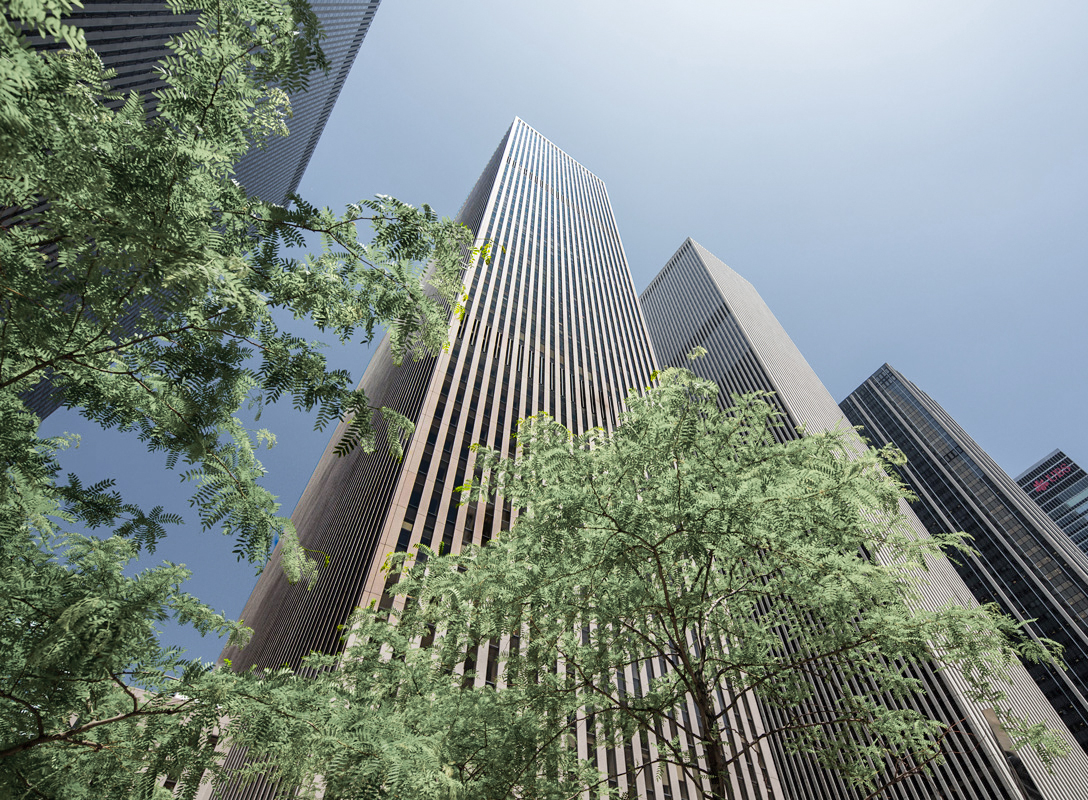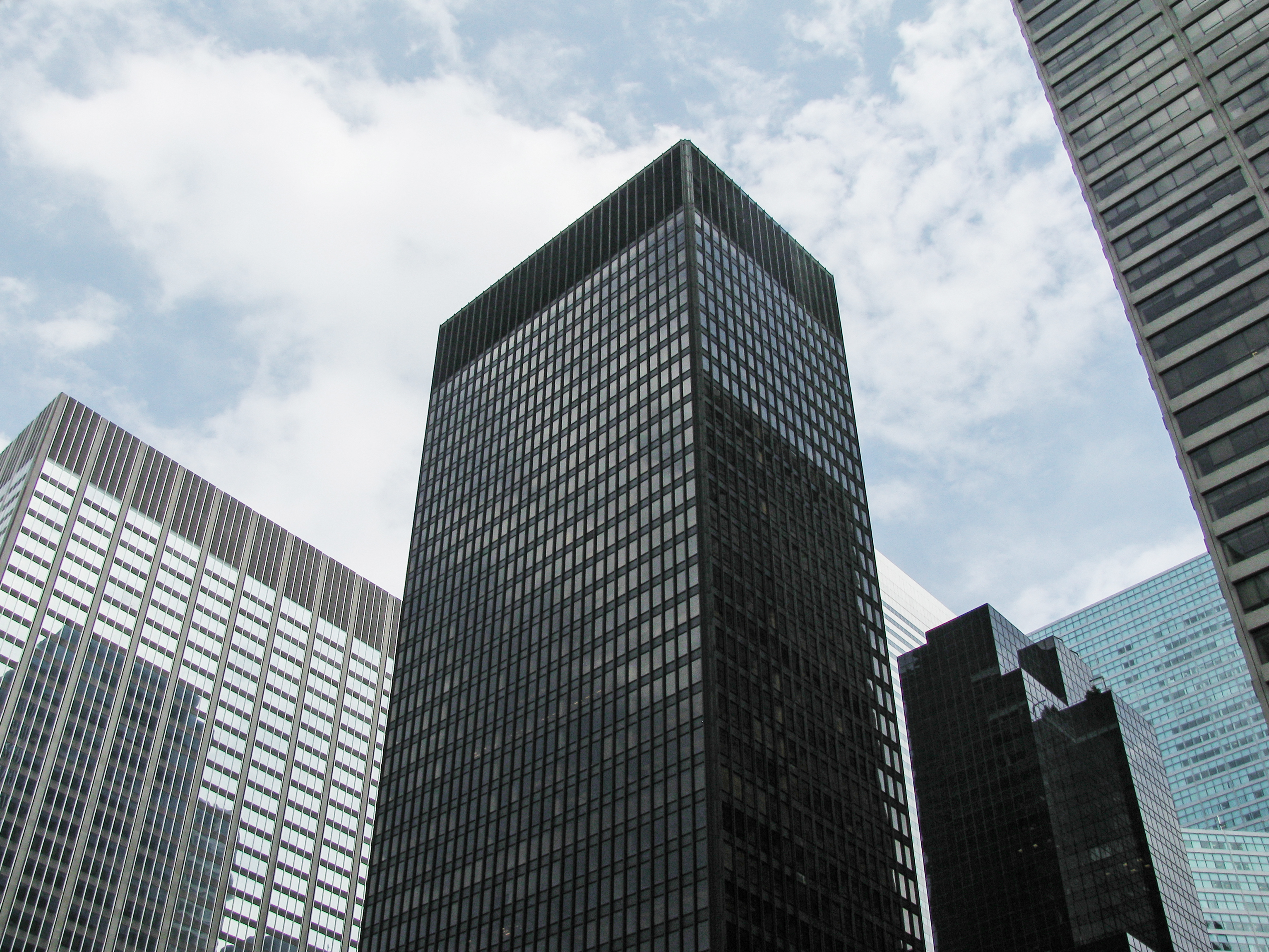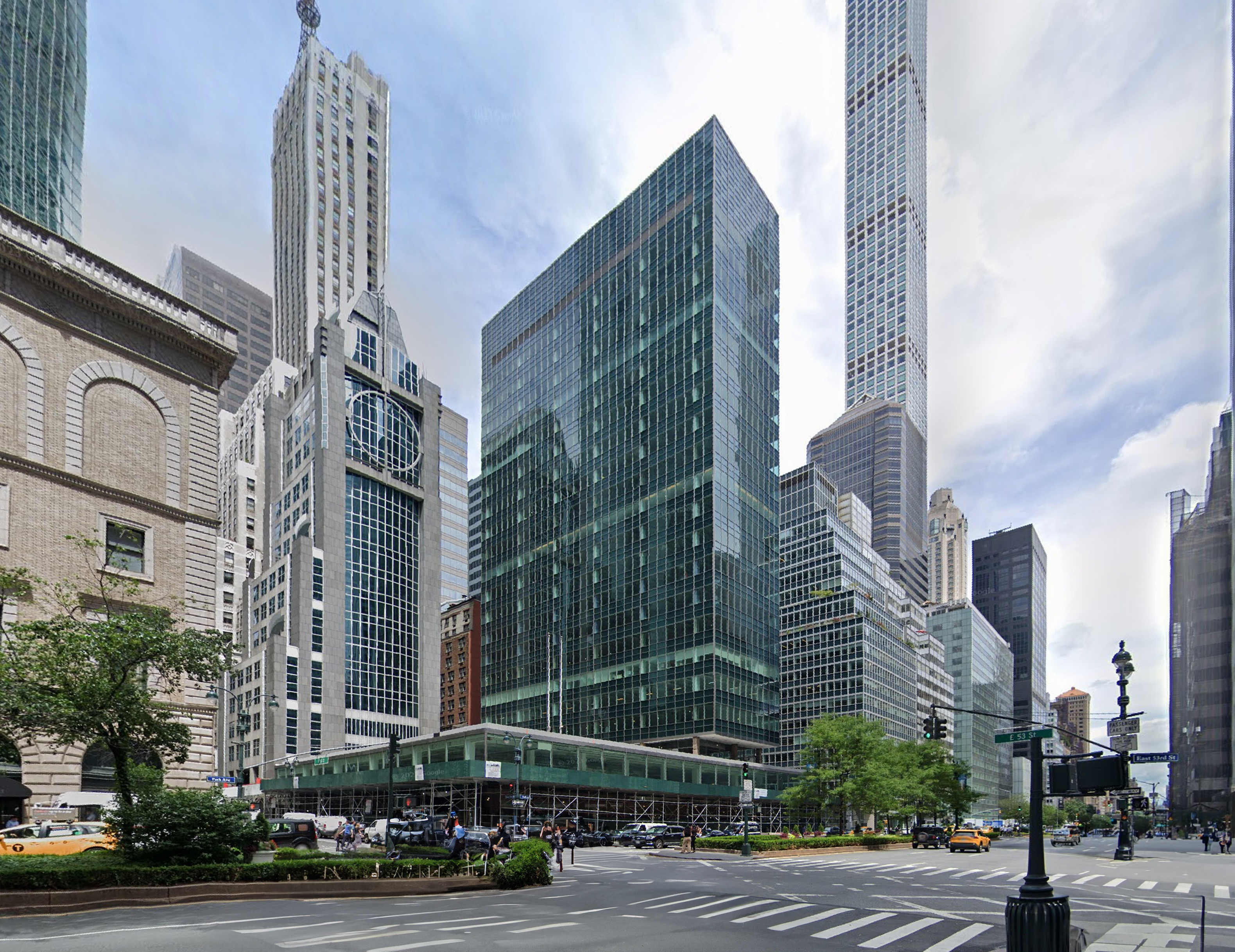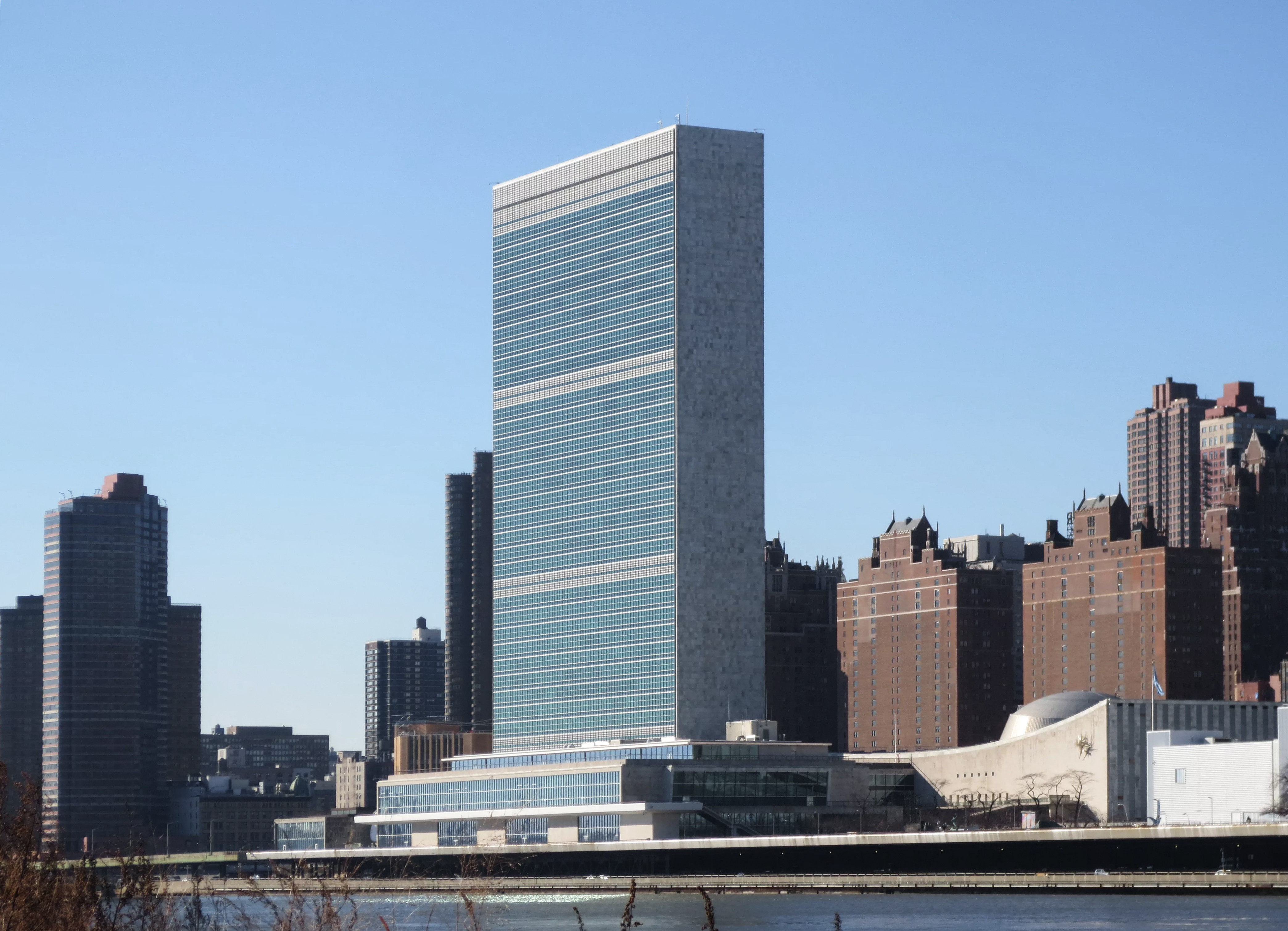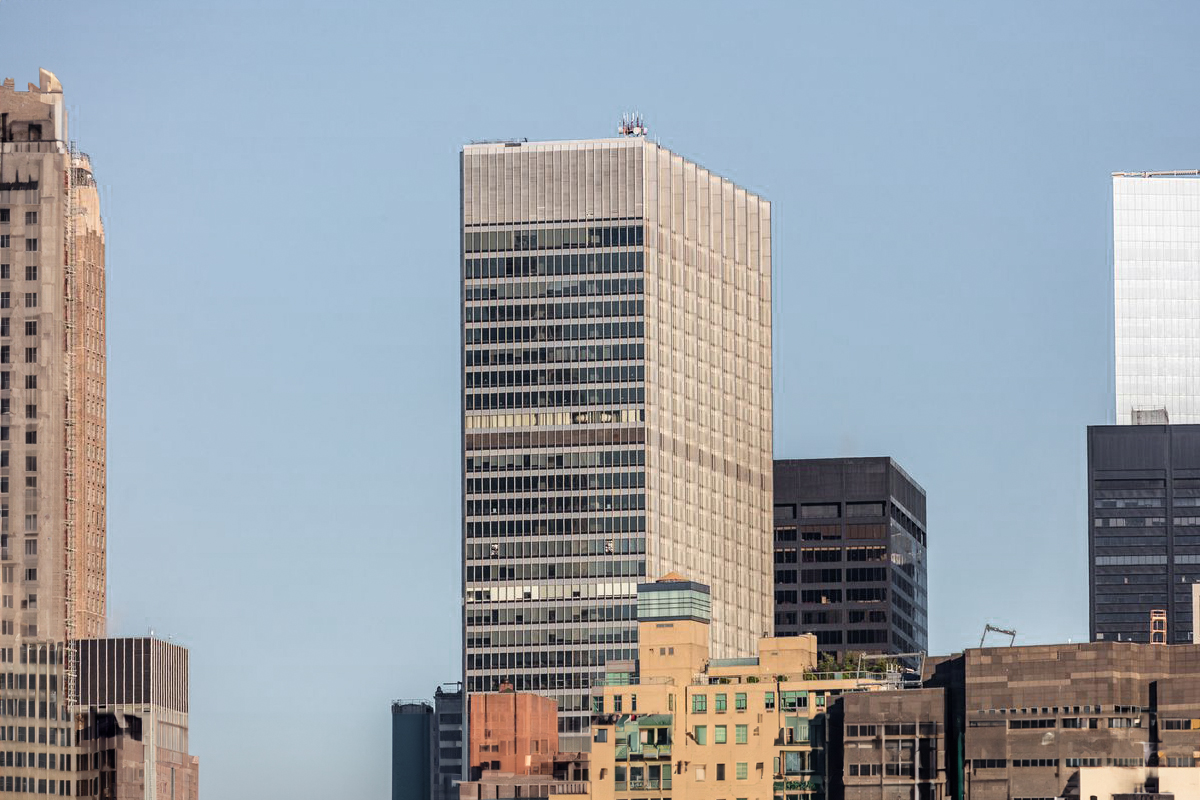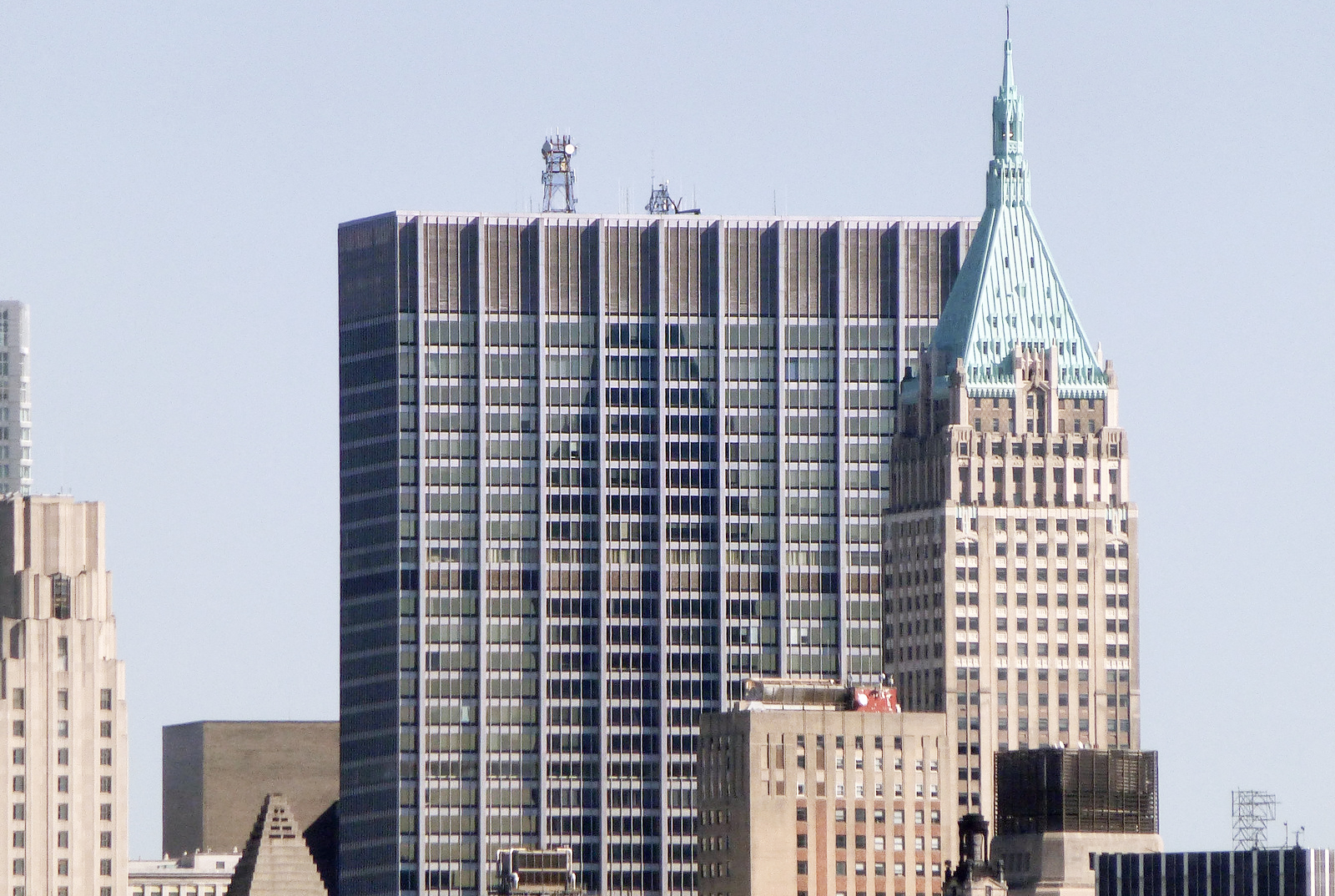The 1221 Avenue of the Americas is an International Style skyscraper designed in 1963 by Harrison, Abramovitz & Harris, with Wallace Harrison as lead architect, and built between 1966 and 1972 in New York, NY.
1221 Avenue of the Americas is not the only name you might know this building by though. Between 1969 and 2015 it was also known as McGraw-Hill Building.
Its precise street address is 1221 6th Avenue, New York, NY. You can also find it on the map here.
A plaza located on the south side of the building sits slightly below street level, creating a sense of refuge amidst the city's hustle and bustle. On the west side of the tower, there's a seven-story base that conceals a landscaped public passageway running through the block.
The building has been restored 2 times over the years to ensure its conservation and adaptation to the pass of time. The main restoration works happened in 2016 and 2023.
